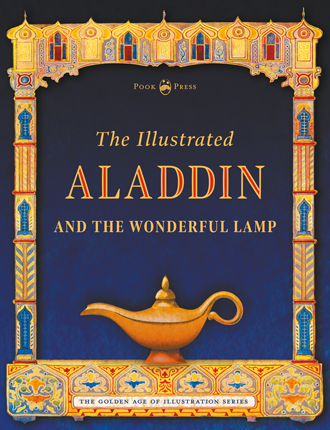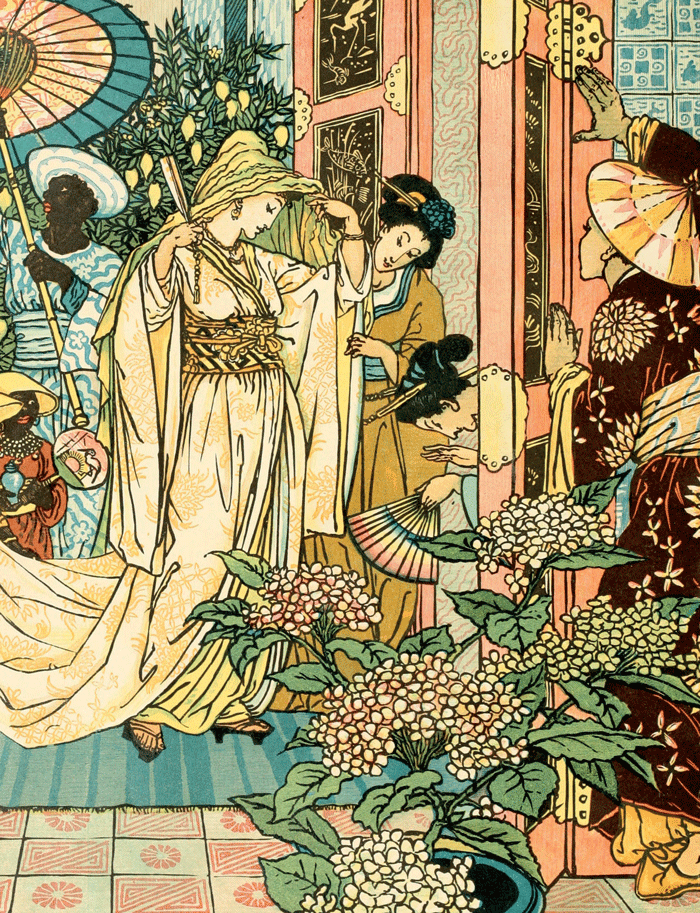The History of the Original Aladdin Tale
The story of Aladdin is a classic ‘rags to riches’ story featuring a young hero, a beautiful princess, an evil villain, and made complete with a magical genie (or two?). It has come to be one of the best-known and most retold fairy tales of all time. So, what is the history of this beloved tale?
The Original Aladdin
The tale of Aladdin is found in The Arabian Nights tales or One Thousand and One Nights. An enchanting and magical collection of fairy tales of Middle Eastern origin. The Arabian Nights stories were first introduced to Europe in a French translation by Antoine Galland in 1704. These fantastic and exotic stories rapidly gained popularity. There are reports of Galland being roused from sleep by young men under his windows in Paris, imploring him to tell more stories.
It was Galland’s collection that first popularised the Aladdin tale. In fact, the story was not part of the original Arabic manuscript of Thousand and One Nights. Galland added ‘Aladdin and his Magic Lamp’, along with ‘Ali Baba and the Forty Thieves’, and ‘The Seven Voyages of Sinbad the Sailor‘. Galland was told these stories in Paris by a Syrian storyteller named Hanna Diab.
‘Aladdin and His Wonderful Lamp’ has been translated and adapted many times since its first publication in 1704 and continues to be re-told today. Its continued re-tellings are a testament to the story’s ability to inspire and entertain generations of readers.
Where is the Aladdin story set?
The original story of ‘Aladdin’ is, maybe surprisingly, set in China. In the earliest versions of the story, Aladdin is Chinese. He’s also not an orphaned street urchin but a lazy boy living at home with his mother. All the characters in the tale are also Chinese apart from the wicked magician who is from North Africa. Some scenes of the story take place in North Africa, but we remain in China for the majority of the story.
Agrabah ‘the city of mystery and enchantment’ is, in fact, a fictional city imagined for Disney’s Aladdin film (1992). The creators drew inspiration from the city of Baghdad in Iraq and then gave the city a fictional name. Disney also drew on the Indian city of Agra’s Taj Mahal for the setting of the story’s royal palace.
Characters in the Original Aladdin
More recent re-tellings of ‘Aladdin and his Wonderful Lamp’, notably the Disney film have popularised characters and eliminated others that appear in the original story.
One of the main distinctions of the original story is Aladdin’s mother. In the early versions of the tale, she is alive and well and plays a significant role in aiding Aladdin to meet the beautiful princess. However, in later versions, he is orphaned and homeless and has to find his own way to win the princess.
Another character dropped in later versions is the second genie. Yep, that’s right, there are two genies in the original story. The first we all know and love is the Genie of the Lamp. The second is not as well-known and is the slave of a magic ring which Aladdin receives from the evil magician.
There are many other differences too. You can read the full original story on our blog – here.
Illustrators of Aladdin
With such fantastic, magnificent, colourful stories it is no wonder the Arabian Nights and ‘Aladdin and His Wonderful Lamp’ have captured the imagination of many great artists for centuries. Famous illustrators of the classic tale include H. J. Ford for Andrew Lang’s Arabian Nights Entertainments, published in 1898; Walter Crane for Aladdin’s Picture Book (1876); Edmund Dulac for Stories from the Arabian Nights (1907), and Arthur Rackham. Others artists include John D. Batten, (Fairy Tales From The Arabian Nights, 1893), Monro S. Orr, Charles Robinson and Louis Rhead to name a few.
You can find many of these illustrated editions in our bookshop, here.
Discover the treasure trove of exquisite illustrations in one beautiful volume – The Illustrated Aladdin and the Wonderful Lamp.








